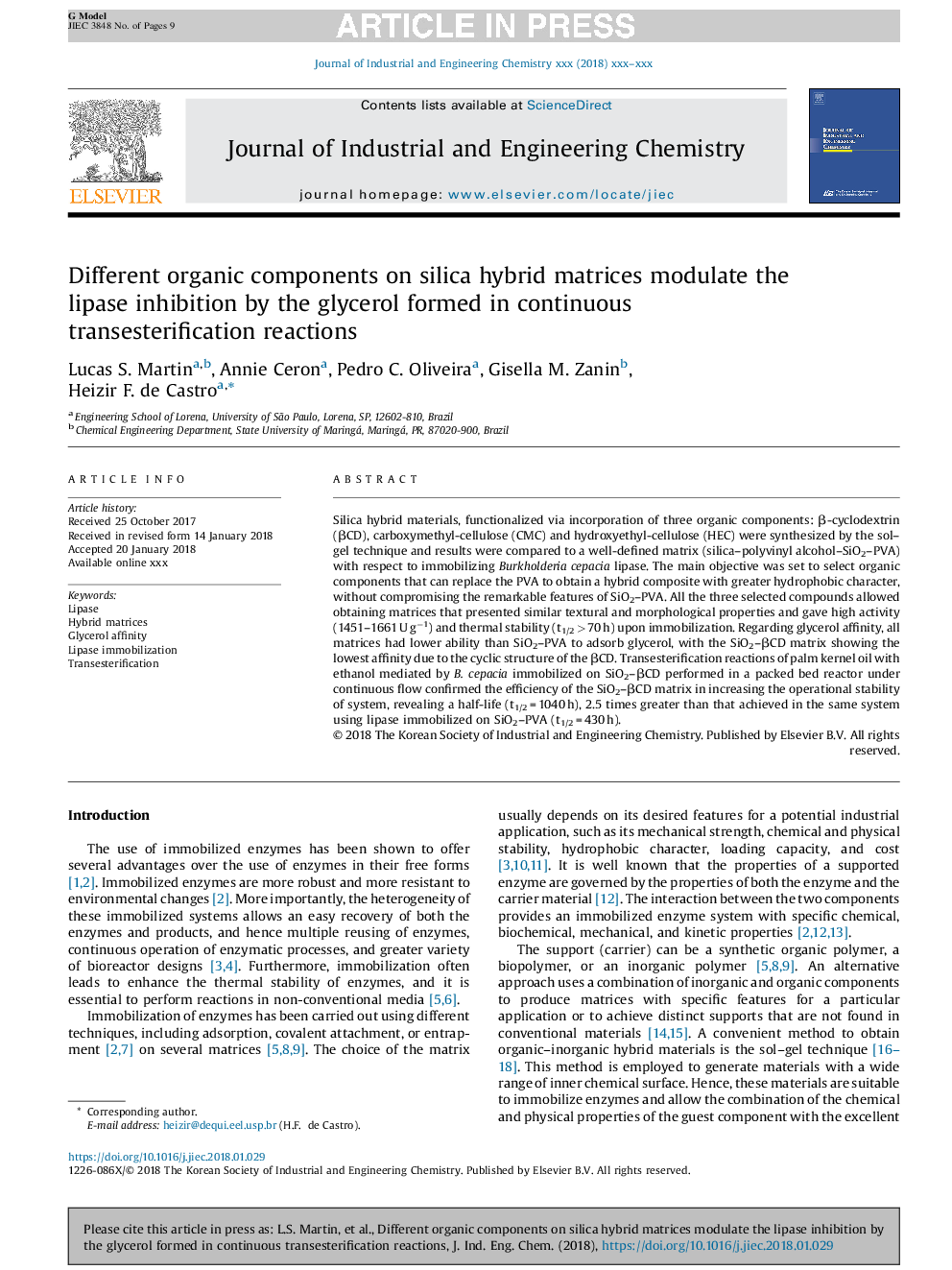| Article ID | Journal | Published Year | Pages | File Type |
|---|---|---|---|---|
| 6666691 | Journal of Industrial and Engineering Chemistry | 2018 | 9 Pages |
Abstract
Silica hybrid materials, functionalized via incorporation of three organic components: β-cyclodextrin (βCD), carboxymethyl-cellulose (CMC) and hydroxyethyl-cellulose (HEC) were synthesized by the sol-gel technique and results were compared to a well-defined matrix (silica-polyvinyl alcohol-SiO2-PVA) with respect to immobilizing Burkholderia cepacia lipase. The main objective was set to select organic components that can replace the PVA to obtain a hybrid composite with greater hydrophobic character, without compromising the remarkable features of SiO2-PVA. All the three selected compounds allowed obtaining matrices that presented similar textural and morphological properties and gave high activity (1451-1661 U gâ1) and thermal stability (t1/2 > 70 h) upon immobilization. Regarding glycerol affinity, all matrices had lower ability than SiO2-PVA to adsorb glycerol, with the SiO2-βCD matrix showing the lowest affinity due to the cyclic structure of the βCD. Transesterification reactions of palm kernel oil with ethanol mediated by B. cepacia immobilized on SiO2-βCD performed in a packed bed reactor under continuous flow confirmed the efficiency of the SiO2-βCD matrix in increasing the operational stability of system, revealing a half-life (t1/2 = 1040 h), 2.5 times greater than that achieved in the same system using lipase immobilized on SiO2-PVA (t1/2 = 430 h).
Related Topics
Physical Sciences and Engineering
Chemical Engineering
Chemical Engineering (General)
Authors
Lucas S. Martin, Annie Ceron, Pedro C. Oliveira, Gisella M. Zanin, Heizir F. de Castro,
